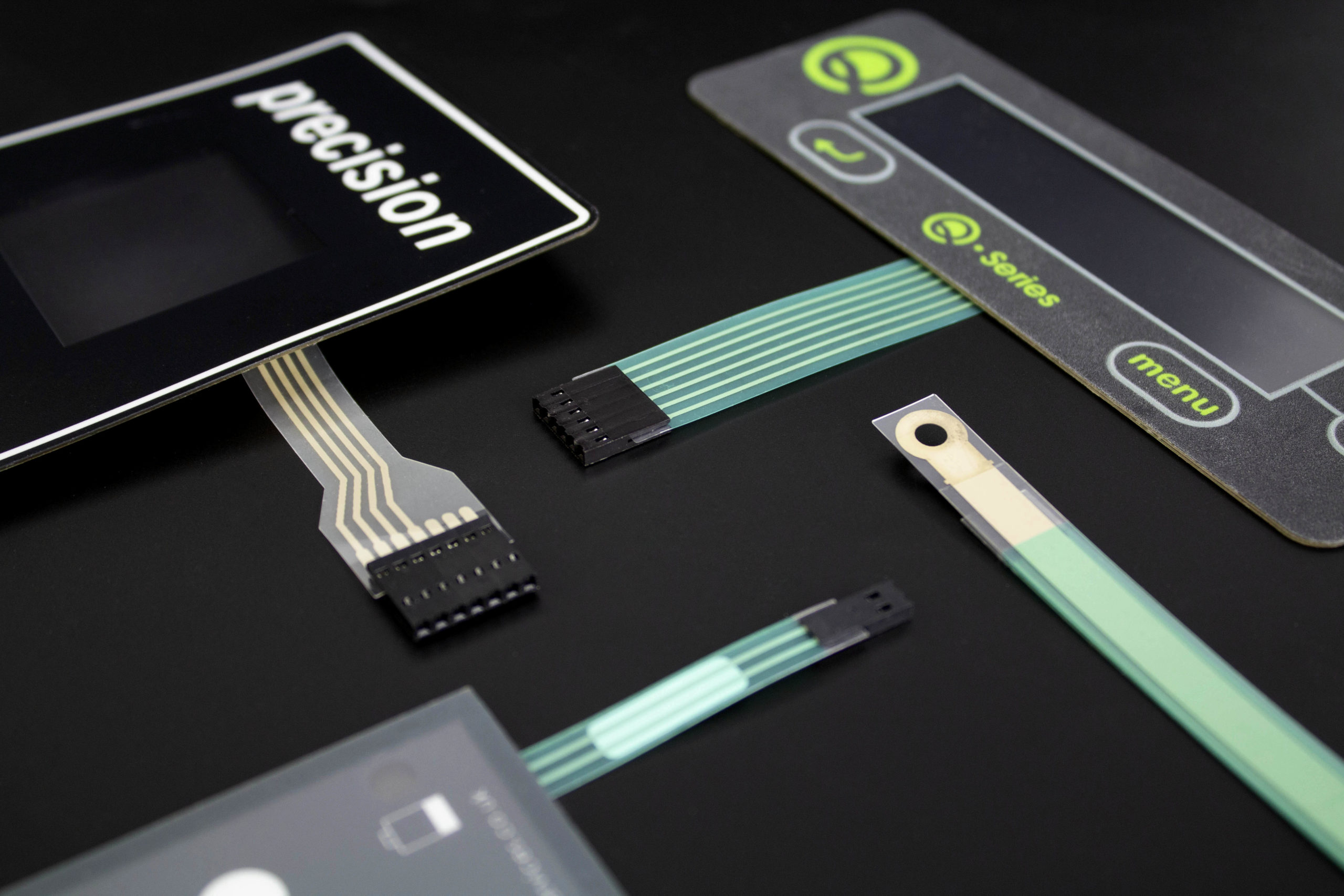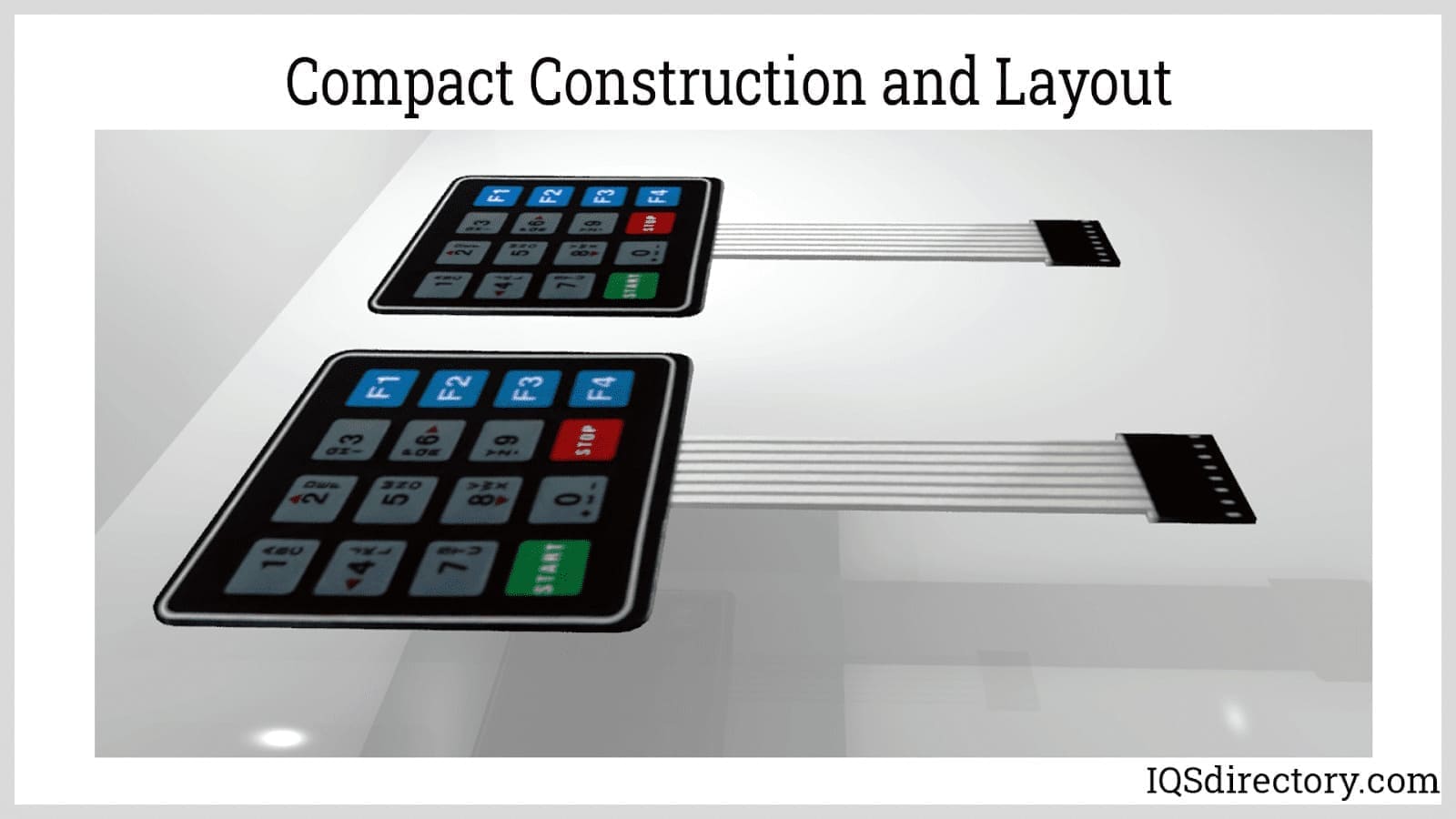Everything About Membrane Switch: A Comprehensive Overview for Beginners
Membrane layer buttons are necessary components in contemporary electronic devices, offering a distinct interface for user interaction - membrane switch. Their split building and construction, including overlays and conductive traces, gives functionality and longevity. Unlike typical mechanical switches, membrane layer switches provide a smooth style and adjustable alternatives. Comprehending their key functions and advantages can change item style. However, the complexities of their application and layout considerations require further exploration
What Is a Membrane layer Change?
A membrane switch is a type of electric button that contains a flexible membrane layer layered over a published circuit board. This design enables for a smooth and compact user interface, commonly utilized in different electronic gadgets. Membrane layer buttons are typically located in consumer devices, medical equipment, and industrial machinery as a result of their durability and resistance to environmental factors.The construction generally includes numerous layers, such as graphic overlays and glue backing, which offer tactile comments and safeguard the wiring below. The operation of a membrane switch is started when stress is used to the surface, finishing an electrical circuit.These buttons are valued for their convenience, making it possible for customized layouts and published graphics that cater to certain individual interfaces. Their low-profile nature decreases area needs, making them excellent for applications where conventional switches may not fit. In general, membrane layer buttons use a practical and visual service for modern electronic devices.
Secret Components of Membrane Layer Switches
Membrane switches over consist of a number of essential parts that add to their performance and performance. The top layer, referred to as the overlay, gives the interface and is typically printed with signs or graphics. Beneath the overlay exists a spacer layer, which separates the conductive elements and stops unintentional activation. The following important part is the visuals layer, which improves visual appeals and ensures the toughness of the design.Conductive traces, usually made from products like silver or carbon, are printed on the circuit layer. When pressure is related to the overlay, these traces enter into call, finishing the circuit. In addition, a backing layer offers architectural assistance and can be made from materials such as polyester or polycarbonate. Together, these parts create a reliable, easy to use user interface suitable for various applications, from household home appliances to industrial equipment. Recognizing these elements is essential for any person thinking about membrane switch technology.
Just How Membrane Switches Job
Understanding exactly how membrane layer switches function is important for valuing their widespread usage in various tools. A membrane switch operates via a collection of layers, consisting of a graphic overlay, spacer, and a circuit layer. When pressure is put on the overlay, it presses the spacer layer, enabling the circuit layer to make get in touch with and complete an electrical circuit. This action sends a signal to the gadget, prompting a feedback, such as turning on a light or turning on a function.Membrane switches can be designed with numerous attributes, consisting of responsive responses, backlighting, and personalized graphics, improving user interaction. Their building enables for a covered design, shielding the inner components from dust, wetness, and contaminants. This longevity makes them appropriate for varied applications, from consumer electronic devices to industrial equipment. Generally, the simplicity and effectiveness of membrane switches add to their appeal in contemporary technology.
Advantages of Membrane Layer Switches Mechanical Buttons
While mechanical switches have long been a staple in many devices, membrane switches over offer distinct advantages that make them significantly appealing. One considerable advantage is their slim profile, permitting more portable layouts and greater versatility in item development. In addition, membrane layer switches attribute a consistent surface area, which improves aesthetic appeal and simplifies cleansing, making them suitable for settings where health is critical.Another advantage is their resistance to dust and dampness. Unlike mechanical buttons, which can be compromised by ecological variables, membrane buttons offer a covered interface that safeguards against pollutants - membrane switch. In addition, membrane switches generally have a longer lifespan as a result of fewer relocating parts, resulting in enhanced sturdiness and reliability.Cost-effectiveness is likewise a notable benefit, as membrane buttons can be created wholesale with lower manufacturing costs. These variables integrate to place membrane layer switches as a practical alternative to conventional mechanical options in different applications
Usual Applications of Membrane Changes
Membrane switches are widely made use of in numerous sectors, particularly in consumer electronic devices and industrial control panels. In consumer gadgets, they offer a streamlined, easy to use user interface, while in industrial setups, they improve longevity and performance. Recognizing these applications highlights the flexibility and practicality of membrane layer buttons in contemporary technology.
Consumer Electronics Tools
As consumer electronic devices remain to evolve, membrane layer buttons have actually come to be a popular choice for a variety of gadgets due to their flexibility and sleek design. These switches are typically discovered in smartphones, tablet computers, and push-button controls, where area is minimal and appearances matter. Their reduced account and personalized layouts permit makers to develop easy to use user interfaces that enhance the general individual experience. In addition, membrane layer buttons are commonly used in home appliances such as microwaves and coffee machine, offering intuitive control alternatives while resisting wetness and dust. The durability and dependability of membrane layer switches make them suitable for everyday customer items, guaranteeing durability and regular efficiency. In general, their integration in customer electronic devices shows a mix of functionality and modern redirected here style.
Industrial Control Panels
The applications of membrane layer switches over prolong news past consumer electronic devices, locating significant usage in industrial control panels. These switches are favored for their resilience and resistance to rough atmospheres, making them excellent for producing and process control setups. They supply a trusted interface for operators to manage equipment, monitor procedures, and change setups. Membrane layer switches can be personalized to fit details functional demands, incorporating features like backlighting and tactile responses, boosting customer experience. Their inconspicuous layout enables assimilation right into different equipment, while their capacity to withstand spills, dirt, and severe temperature levels warranties durability. Overall, membrane layer buttons add to risk-free and reliable operation in industrial applications, showing their convenience and performance popular settings.
Factors To Consider for Creating Membrane Switches Over
When developing membrane buttons, picking the ideal products is important to guarantee resilience and functionality. Furthermore, comprehending layer configuration strategies can significantly impact the button's efficiency and customer experience. These factors to consider play a vital function in creating reliable and reputable membrane layer button layouts.
Material Selection Significance
Material choice plays a necessary function in the layout and functionality of membrane layer buttons. The picked materials straight influence the button's resilience, tactile response, and overall visual. Key considerations consist of the substrate, which need to offer architectural honesty while permitting adaptability, and the graphic overlay, which requires to be resistant to put on and environmental aspects. Conductive products need to ensure trustworthy electrical efficiency, while adhesives need to use solid bonding without endangering the button's procedure. Furthermore, compatibility with manufacturing procedures and end-user settings is crucial; materials must withstand differing temperatures, moisture levels, and chemical exposure. Ultimately, proper material option not only boosts the membrane button's performance however likewise adds to its longevity and user contentment, making it an essential facet of the layout procedure.

Layer Setup Methods

Frequently Asked Questions
The Length Of Time Do Membrane Switches Over Generally Last?
Membrane buttons typically have a lifespan of 1 to 5 million cycles, relying on usage and environmental problems. Factors such as design quality and operating frequency greatly affect their longevity and total performance long life.

Can Membrane Switches Over Be Custom-made for Certain Styles?
Membrane layer buttons can indeed be customized to suit details layouts, enabling for diverse forms, shades, and performances. This flexibility allows producers to tailor these buttons to fulfill unique visual and functional requirements properly.
What Materials Are Used in Membrane Layer Change Building?
Membrane switches are generally created utilizing products such as polyester, polycarbonate, and sticky layers. These products give resistance, flexibility, and sturdiness to environmental elements, ensuring the switches operate successfully in numerous applications and problems.
Are Membrane Switches Resistant or waterproof to Wetness?
Membrane layer buttons can be designed to be moisture-resistant, making use of specialized materials and finishes. Their waterproof capacities depend on building and construction top quality and certain applications, making it crucial to assess requirements for perfect performance in various atmospheres.
Exactly How Are Membrane Layer Switches Fixed if Harmed?
Fixing broken membrane switches commonly involves replacing the impacted layer or circuit. Professionals might additionally apply conductive glue or utilize specialized repair sets, ensuring capability is recovered without total replacement of the entire button setting up. Unlike typical mechanical switches, membrane switches provide a sleek layout and adjustable options. A membrane switch is a type of electric switch that consists of an adaptable membrane layered over a printed circuit board. The operation of a membrane button is started when stress is applied to the surface area, finishing an electric circuit.These buttons are valued for their adaptability, allowing custom layouts and published graphics that cater to details individual interfaces. While mechanical switches have long been a staple in many tools, membrane switches over deal unique advantages that make them progressively appealing. Membrane layer switches typically have a longer life-span due to less moving parts, resulting in boosted longevity and reliability.Cost-effectiveness is likewise a notable benefit, as membrane buttons can be created in bulk with lower manufacturing costs.